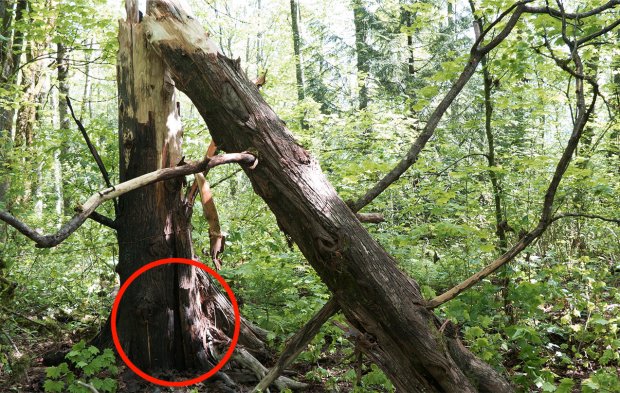As we’re based in Burkittsville, you might expect us to jump right in with the saga of our beloved local heroine. We promise you, there’s a lot to say about her that hasn’t been said yet – and soon, very soon, we’ll reveal our findings.
For now, however, we’d like to pay tribute to poor Mary “Moll” Dyer, the persecuted witch of St. Mary’s County.
Moll Dyer immigrated to Southern Maryland in 1677, when witchcraft trials were still the rage. Nothing is known about her first two decades in Newtown – today’s Leonardtown – but it’s possible that when she arrived, she was a married woman of good standing, and at some point was left widowed and isolated: an easy target for a witch hunt.
The winter of 1697 was bitterly cold, and a great influenza pandemic was beginning to take its toll. So who do you blame when the livestock are freezing to death and the children are perishing from the flu? Why, the old herbalist who lives in the forest, of course.
It happened in February 1697: the people of Newtown armed themselves with torches and marched down to Moll Dyer’s cabin with murder on their minds. They burned her cabin to the ground. But no one could find Moll herself.
Their torches dimming, the townsfolk retreated to their homes for the night. Meanwhile, Moll was hiding in a ravine. She had smelled the pitch from the torches and fled her home with no time to protect herself against the elements. She didn’t survive the night. Her frozen body was found the next day, embracing a small boulder. It was so cold that her very flesh stuck to the stone – namely, one hand and one knee.
Moll’s name lives on in Leonardtown: there’s a Moll Dyer Road along Moll Dyers Run, a creek in the ravine where she died.
The boulder that Moll was clutching remains a local talisman. At some point, it was moved from the ravine next to the town’s jail – perhaps as a warning to misbehaving children. People claimed you could even see the indentations of Moll’s hand and knee in the rock.
We headed down to Leonardtown last Saturday, before the snow hit, to see for ourselves. (This entailed a grueling slog through DC traffic. Anything for you, readers.)
The old Leonardtown jail is now the St. Mary’s County Historical Society. And yes, Moll Dyer’s Rock is still there, sitting next to the building. It’s surprisingly small – about the size of a duffel bag – and very plain. But if you use your imagination, you can indeed make out a hand-shaped indentation. It’s said that even in the heat of summer, the stone remains cold to the touch. The weather was a bit chilly when we visited, so we’ll have to take people’s word for it.
We ended our Leonardtown tour with a walk down Moll Dyer Road. Many accidents have occurred on this lonely, forested street, often attributed to a mysterious white dog. We didn’t see any dogs, but a very white blizzard did cause several accidents in the area the next day. Much as we’d like to, however, we can’t blame Moll Dyer for a regular old Southern Maryland snowstorm.

